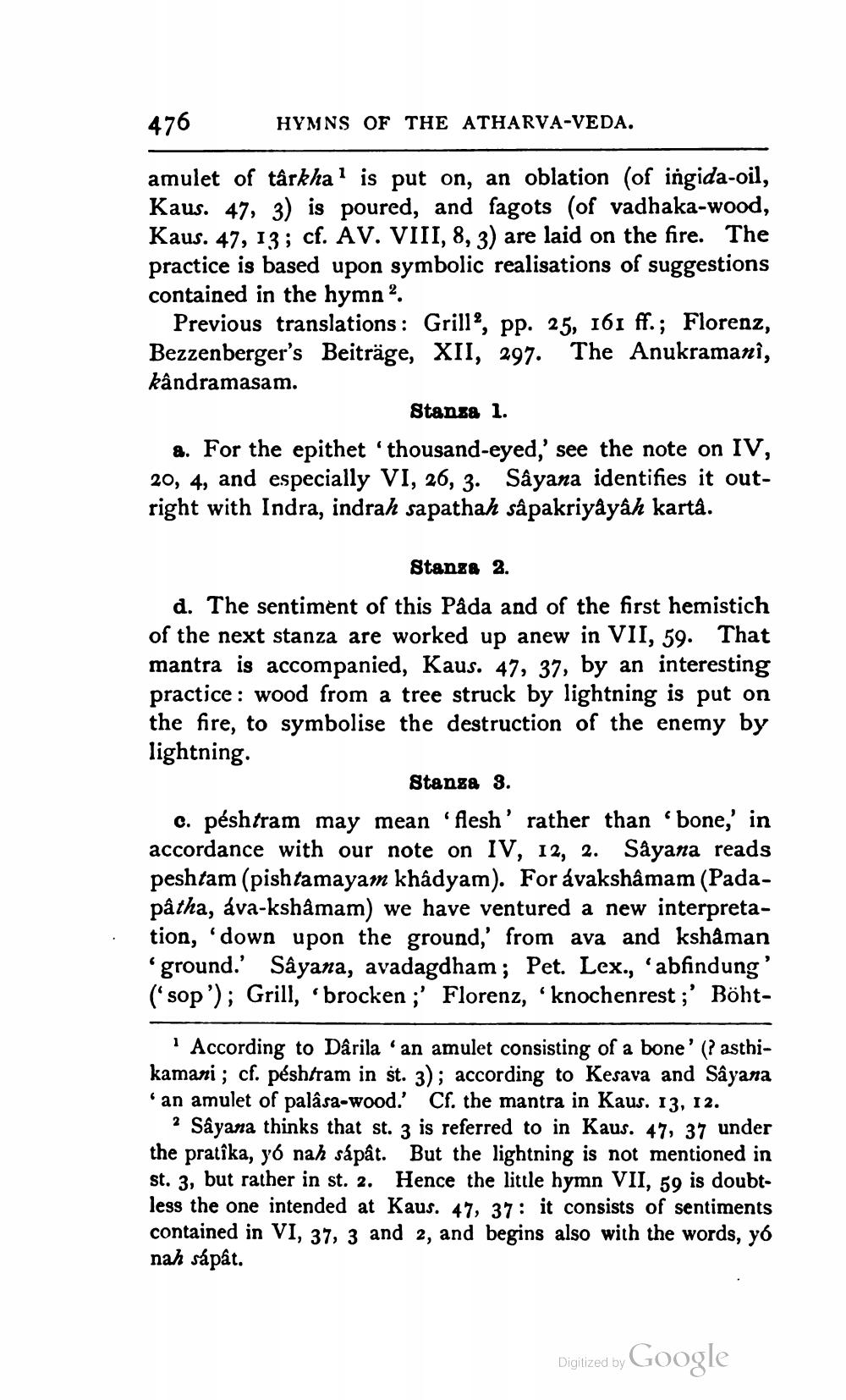________________
476
HYMNS OF THE ATHARVA-VEDA.
amulet of târkha' is put on, an oblation (of ingida-oil, Kaus. 47, 3) is poured, and fagots (of vadhaka-wood, Kaus. 47, 13; cf. AV. VIII, 8, 3) are laid on the fire. The practice is based upon symbolic realisations of suggestions contained in the hymn 2.
Previous translations: Grill?, pp. 25, 161 ff.; Florenz, Bezzenberger's Beiträge, XII, 297. The Anukramani, kândramasam.
Stansa 1. a. For the epithet ‘thousand-eyed,' see the note on IV, 20, 4, and especially VI, 26, 3. Sâyana identifies it outright with Indra, indrah sapathah sâpakriyâyâh karta.
Stanza 2. d. The sentiment of this Påda and of the first hemistich of the next stanza are worked up anew in VII, 59. That mantra is accompanied, Kaus. 47, 37, by an interesting practice: wood from a tree struck by lightning is put on the fire, to symbolise the destruction of the enemy by lightning
Stanza 3. c. peshtram may mean 'Alesh' rather than 'bone,' in accordance with our note on IV, 12, 2. Såyana reads peshtam (pishtamayam khadyam). For ávakshamam (Padapâtha, áva-kshamam) we have ventured a new interpretation, 'down upon the ground,' from ava and kshaman 'ground.' Sâyana, avadagdham; Pet. Lex., 'abfindung' (sop'); Grill, brocken ;' Florenz, 'knochenrest;' Böht
According to Dârila an amulet consisting of a bone' (? asthikamani ; cf. péshtram in st. 3); according to Kesava and Sâyana an amulet of palâ sa-wood.' Cf. the mantra in Kaus. 13, 12.
? Sâyana thinks that st. 3 is referred to in Kaus. 47, 37 under the pratîka, yo nah sápât. But the lightning is not mentioned in st. 3, but rather in st. 2. Hence the little hymn VII, 59 is doubtless the one intended at Kaus. 47, 37: it consists of sentiments contained in VI, 37, 3 and 2, and begins also with the words, yo nah sápât.
Digized by Google




